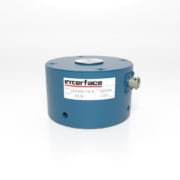Digging Into Interface Mining Industry Solutions
 Sensors are integral to ensuring the safety of mines, including underground, open surface, placer, dredging, highwall, mountaintop, and in-situ. However, one of the most valuable uses for Interface sensor technologies is assuring that equipment is adequately tested, controlled, and monitored to ensure safe operations.
Sensors are integral to ensuring the safety of mines, including underground, open surface, placer, dredging, highwall, mountaintop, and in-situ. However, one of the most valuable uses for Interface sensor technologies is assuring that equipment is adequately tested, controlled, and monitored to ensure safe operations.
The mining industry is wrought with hazards and extreme environments that can put a job site at risk and, more critically, endanger miners’ lives. Mining equipment and tools manufacturers turn to Interface for various transducers designed for use in unique and hazardous environments. These measurement instruments are essential in meeting the rising safety requirements of the mining industry and significantly improve the quality and reliability of mining equipment.
Interface force and torque measurement products help to efficiently and safely extract and process metals, gemstones, limestone, chalk, coal, oil shale, dimension stone, rock salt, potash, gravel, and clay.
Interface products are essential for designing, testing, and utilizing mining equipment, machines, components, and systems. Our load cells, instrumentation, torque transducers, multi-axis sensors, load shackles, and tension links are used in tools and equipment for the mining industry.
The data gathered from Interface measurement solutions ultimately helps monitor the mine’s structural supports, optimize digging and lifting processes, reduce wear and tear on equipment, and prevent overloading, which can lead to costly downtime and maintenance. This data is typically gathered throughout one of two stages of the product cycle: during thorough product testing or while monitoring the product in real-time. The mining industry heavily utilizes both use cases.
For example, Interface load cells are used for conveyor systems, which rely on force measurement to monitor the tension and load on conveyor belts. Load cells can also be installed on mining shovels, draglines, and excavators to measure the load on the buckets or booms.
Excavator Test and Measurement Applications
Load cells and torque transducers are used to test the performance of excavators. This includes testing the excavator’s digging force, lifting capacity, and swing torque. An Interface load cell can accurately measure the force exerted by the excavator’s bucket as it digs into the ground. The measurement data provides information to determine if the excavator has sufficient digging force to complete the task. Our torque transducers are helpful in accurately measuring the swing torque of the excavator to assess that there is adequate torque to swing the boom and bucket safely and efficiently.
Mining Equipment Design and Testing
Load cells and torque transducers are valuable in the design of mining and excavation equipment. The precision of Interface’s LowProfile Load Cells accurately measures the forces acting on different parts of the equipment, such as the boom, bucket, and undercarriage. The measurement data during extensive testing can also help determine how to optimize the equipment. Our Mini Load Cells, like the SSMH Sealed Hazardous Environment Intrinsically Safe S-Type Load Cell, can be integrated into mining equipment and tools for continuous monitoring and safety alarms to protect from overloading. Torque transducers can measure the torque requirements of different equipment components, such as the rotary drive and swing drive. This information can be used to design more powerful and efficient components.
Monitoring the Safety and Regulation of Cranes
Mining operations worldwide rely on cranes, lifting equipment, and heavy-duty vehicles. This equipment requires rigorous testing of every component and continuous monitoring to safeguard the equipment and, more importantly, operators.
In this video application, the customer verified if the crane is safe and functional enough to lift its working load limit (WLL) or safe working load (SWL) capacity. Using the Interface Model WTSATL-JR Aluminum Compact Wireless Tension Link Load Cell, they can measure the load’s maximum capacity. The WTS-RM1 Wireless Relay Output Receiver Modules can also trigger an alarm that can be set when it reaches the maximum capacity of weight and force. The data is transmitted and can be reviewed with the WTS-BS-1-HS Wireless Handheld Display or on a computer.
See how our measurement solutions are used for crane capacity verification.
Interface offers an intrinsically safe lineup of products designed for rugged and extreme conditions that are of great value in the mining industry. These specialized load cells and force measurement solutions are designed and manufactured so that the materials and electronic components are safe for use in hazardous gas and dust environments when installed per applicable installation instructions. These components play an integral role in the safety of those working in dangerous environments, particularly in natural resource industries like oil, gas, forestry, and mining.
To learn more about our products used in the mining and natural resource industries, contact Interface Application Engineers. They are ready to answer your questions and find the correct measurement solution for your requirements.








